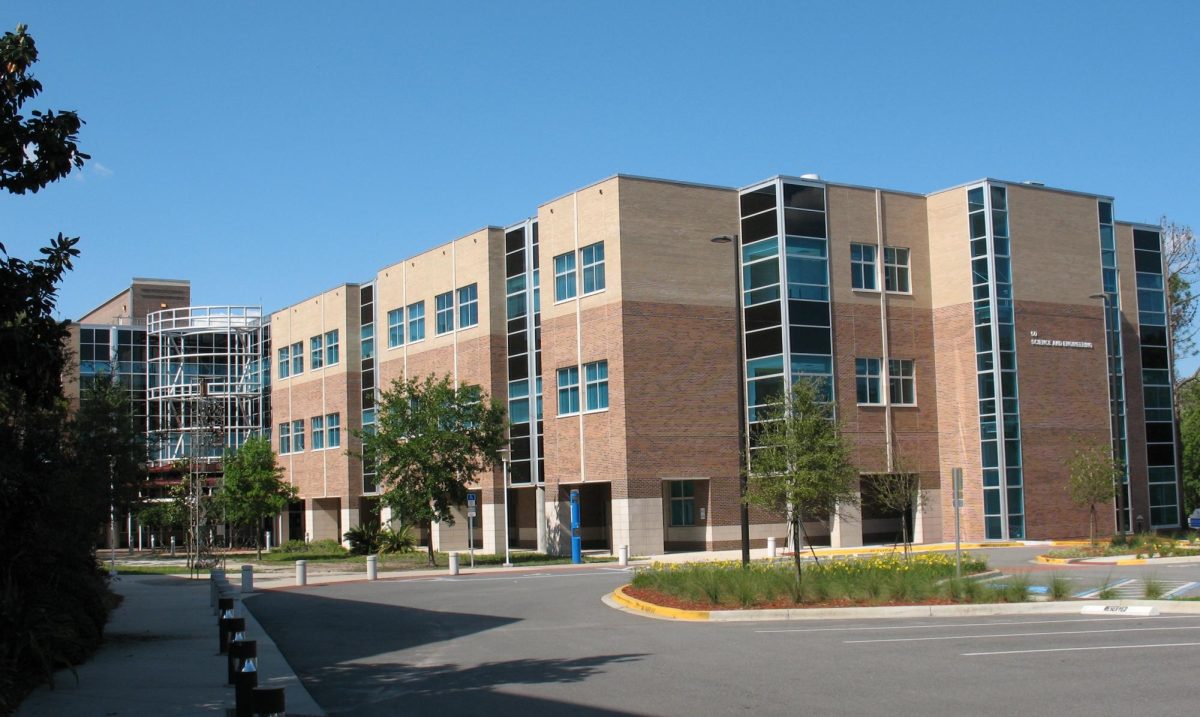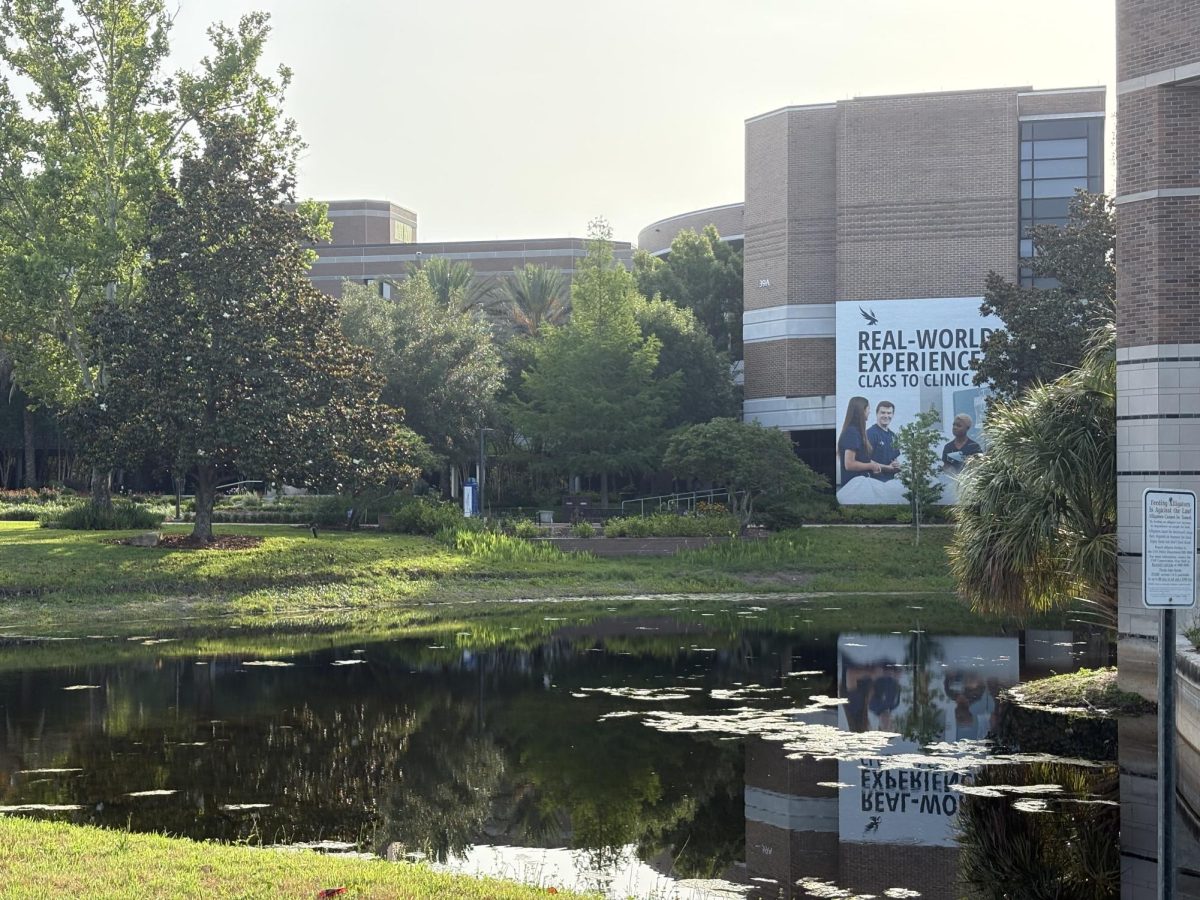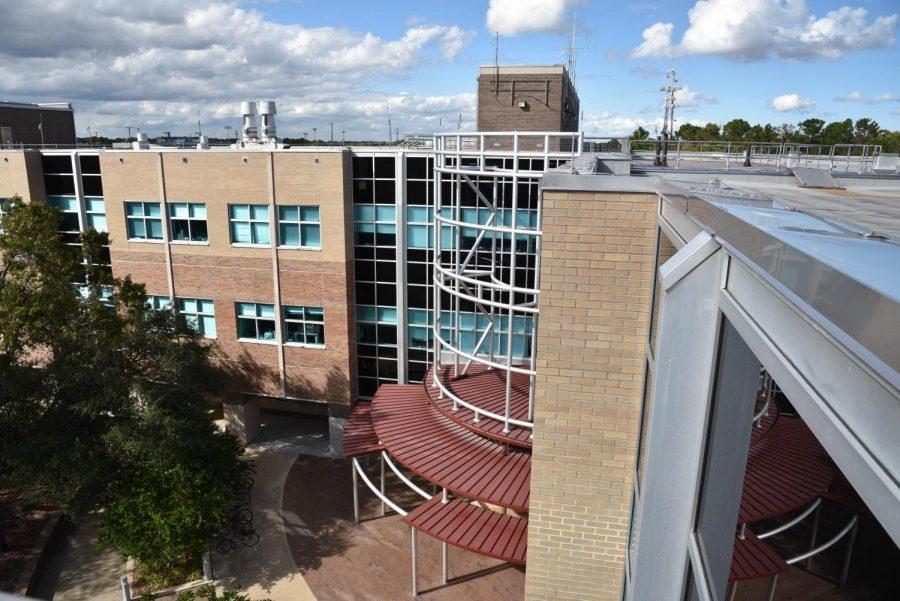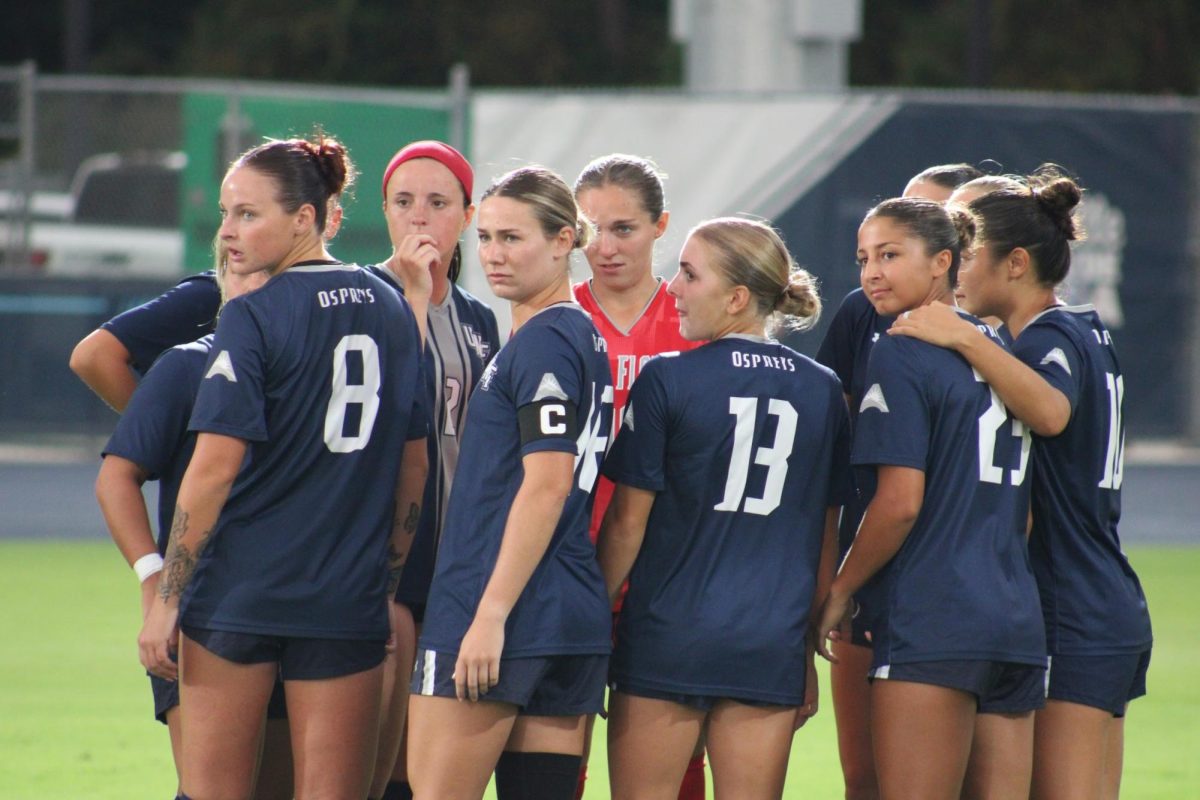 “OK, we’re nearing 2,500 feet, grab the yellow knob,” Howard Vargalis said to his passenger.
“OK, we’re nearing 2,500 feet, grab the yellow knob,” Howard Vargalis said to his passenger.
He pauses, waiting for the altimeter needle to move to the right just a little more, “OK, pull it now.”
The 200-foot nylon rope connecting the 27-foot powerless Sailplane to the 235 horsepower crop duster snaps and coils away as the glider veers sharply to the right to avoid colliding.
As the airplane slides out of sight, the air is suddenly quiet, with only the sound of air rushing past the small craft, lending to a nearly spherical view.
Howard Vergalis, 56, was one of four pilots who gave a member of the Spinnaker staff a ride in a Sailplane Oct. 9. He has been flying powered airplanes for 20 years and got his glider license this past September. He joined the North Florida Soaring Society’s four years ago and is one of 79 members who enjoy the sport of soaring.
The society, located eight miles southwest of downtown Jacksonville at Herlong Airport, took-off in the ‘60s. The society promotes soaring to the Jacksonville area and beyond by offering facilities, equipment, education and training to its members. It also offers rides to the public all year in its Let Blanik L-23 Sailplane, Tommy, Friday through Sunday, year-round.
Mark Dickman, who has been teaching music at UNF since 1986, is the society’s president. He said planes and flying have always intrigued him.
“My dad was a pilot, and I always built model airplanes when I was a kid,” he said.
He has a pilot’s license but became certified as a glider pilot first because it was more practical, he said.
Soaring costs a third of the price of flying in a powered airplane, Dickman said.
Dickman relates the challenges of soaring to the progression of his profession.
“[Soaring] is a lot like music,” he said. “You have to practice.”
What is a Sailplane?
At just 600 to 1,000 pounds, Sailplanes are small and hold up to two people. They are predominately made of aluminum; some newer models are made of fiberglass. These materials are ideal because they are much smoother and allow for more air foil, Dickman said.
The planes are aerodynamically designed to glide efficiently through the air, he said. The society’s Sailplane has a large wingspan of 40 feet, allowing for a more optimal air flow than the short, stubby wings on a powered plane. It’s 28-to-1 ratio means for every 28 feet the plane glides forward, it glides down one foot.
At an elevation of at least 2,500 feet, the planes are separated and the soaring begins.
How does soaring work?
Sailplanes don’t only glide toward the ground, Dickman said. By catching thermal lifts, they are able to reach higher altitudes, extending the ride.
The flight pattern is similar to that of vultures, which are able to circle for long periods of time without flapping by rising with hot air in thermal pockets, said society member John McGlynn.
The earth, when the sun heats it, creates bubbles of warm, rising air that form columns, called thermals. Solar heating from the earth’s surface creates thermals, causing the warmer, less dense air to rise and cooler, denser air to sink, Dickman said.
But don’t expect to find thermals by looking, they aren’t found by the eyes, but rather by feel.
A good soaring pilot knows how to analyze weather patterns and actively look for signals in the air, like birds, or the maturity of cumulus clouds, Dickman said.
The metal roofs of a trailer park near Herlong Airport sometimes radiate thermals, he said.
Why do they soar?Dickman said he enjoys the concept of soaring because it’s unpredictable.
“Every day is different,” he said. “It’s not so tied-in for exact timings. You might be up there for an hour.”
Ronna Mason, a first-time soarer, drove from Alabama with her husband to experience the tranquility associated with soaring.
“It was amazing,” she said. “It was so peaceful. You could see everything.”
A lesson flight can last between 20 minutes to one hour, depending on weather conditions. However, longer flights at the society are not uncommon.
“I’ve been up for three hours before,” McGlynn said. “We try to stay up as long as we can.”
Dickman hopes to do a cross-country flight next but warned only a seasoned pilot should do it. And while soaring is generally meant as a means for transportation, he encourages others to give it a try.
















